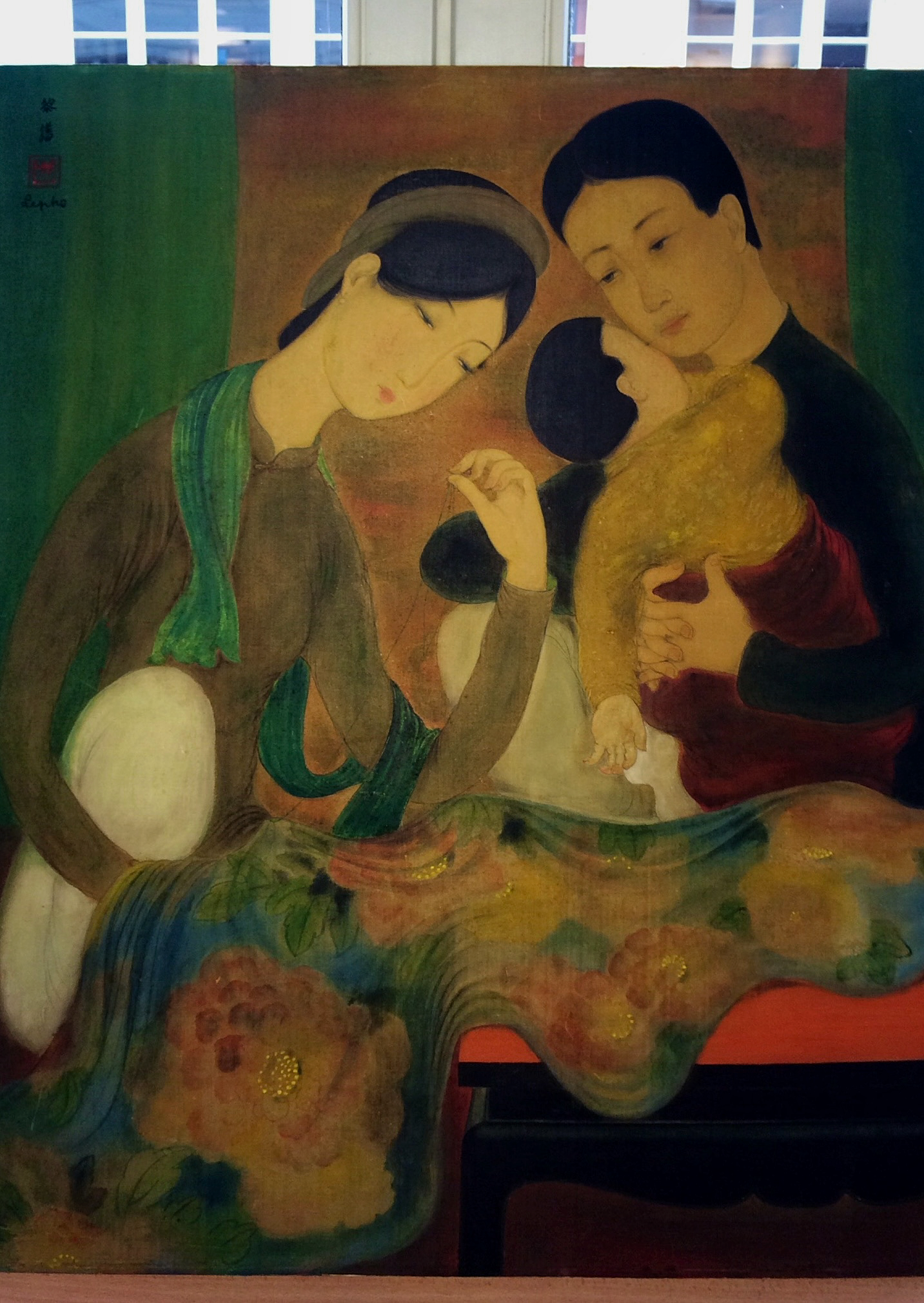
Le Pho (Vietnam, 1907-2001)
Le Moment Agréable (The Pleasant Moment)
signed ‘LE PHO’ (upper left)
Ink and gouache on silk
74 x 60 cm. (29 1/8 x 23 5/8 in.)
Painted circa 1938
on seal of the artist
This work is accompanied by an invoice from Galarie Pasteur dated 23 November 1944.

Dr. Francois Charles, a prominent doctor working in Oran, French Algeria, first acquired the present lot from the well-known cultural establishment Galerie Pasteur in 1944. At the time, he might have simply been drawn to the painting due to its artistry and the tenderness of its subject. He might not have been aware of the significance of his purchase of one of the finest masterpieces by Le Pho.
Le Pho settled in France seven years earlier, and was in the process of becoming one of the greatest Vietnamese painters of the 20th century. After graduating the top in his class at the Fine Arts School of Hanoi (1925-1930), he went on to exhibit at the Colonial Exhibition in Paris (1931), became a renowned teacher at the Fine Arts School of Hanoi (1934) and also participated at the Universal Exhibition in Paris (1937).
One thing we can be sure of, Dr. Charles was surely impressed by the novelty of the technique of applying gouache and ink onto silk and then affixing it to crepe paper. Le Pho started using this new technique of ink on silk in 1930, and along with his contemporaries, Nguyen Phan Chanh and Mai Trung Thu, they would bring this technique to a level of unprecedented mastery. Developing his own trademarks in style and subject, Le Pho, enjoyed depicting women in his art, such as in Jeune Fille en Blanc (Young Girl in White), (Christie's Hong Kong, 29 November 2010, Lot 1579). His subjects were anonymous women whom he represented as idealized paragons of Vietnamese beauty - Le Pho's women are gentle, sweet, and often painted in soft and subtle tones.
In Le Moment Agrable, Le Pho has created an exceptional work focusing on three characters in a familial scene. The lady we recognize as the maternal figure is dressed in a simple ao dai as she embroiders a delicate floral motif onto a piece of fabric. A man sits next to her on a traditional Vietnamese timber bed, and holds a baby protectively in his arms. The faces of all three figures converge towards the center of the painting, affording the composition cohesiveness and strength. Using a classical composition of triangular order and harmony between the three figures, each detail works to capture the tenderness of a quiet moment. The painting is unique for Le Pho's use of strong colours, and when combined with an understated background, emphasizes the centrality of the familial unit. Orphaned at a young age and subsequently raised by his aunt, perhaps Le Pho's preoccupation with representing paradigms of maternal love and familial bliss can be understood as visual expressions of reconciling his own apparent desire for such affections.
Through the mother's thoughtful poise as she dedicates herself to the task of sewing, and the father's tight grasp on the lively child, Le Pho presents a the familial unit as a microcosm of universal harmony and love. The patient act of sewing symbolises the slow and unyielding work of creation, and the fragility of the fabric confronts us with the fragility of the world. In Le Moment Agrable, Le Pho perfectly illustrates how for him, love within the family is the source of irreplaceable happiness.
Thi de tu
Than nhu dien anh, huu hoan vo
We are as ephemeral as lightning.
Van moc xuan vinh, thu huu kho
(As for the trees), in the spring, thousands blossom; when autumn comes, they all dry out
Nhiem van thinh suy vo bo uy
Do not fear life's moments of prosperity and decline.
Thinh suy nhu lo thao dau pho
These moments are as brief and fragile as morning dew on the tip of a green leaf.
Nguyen Van Hanh (?-1018)










